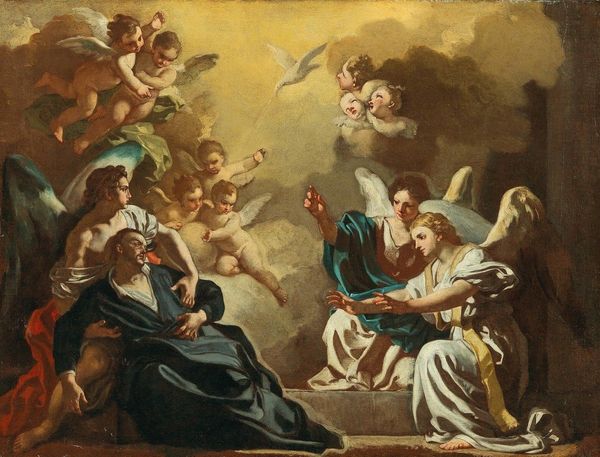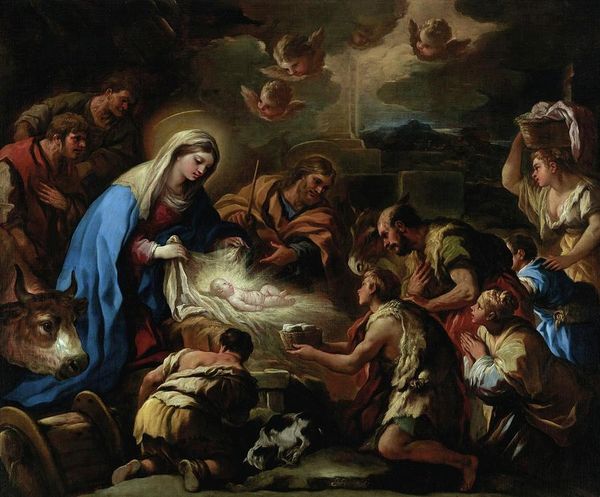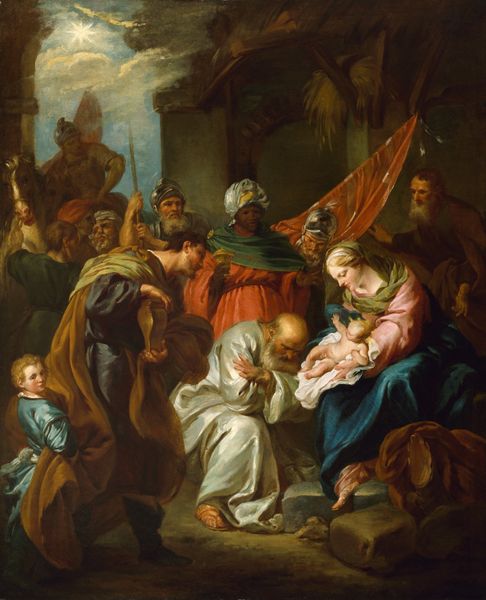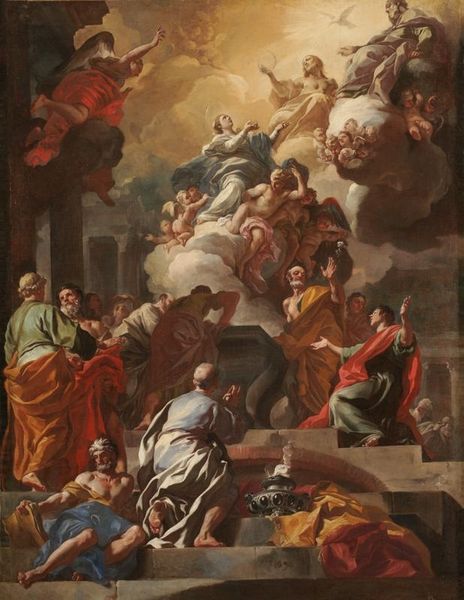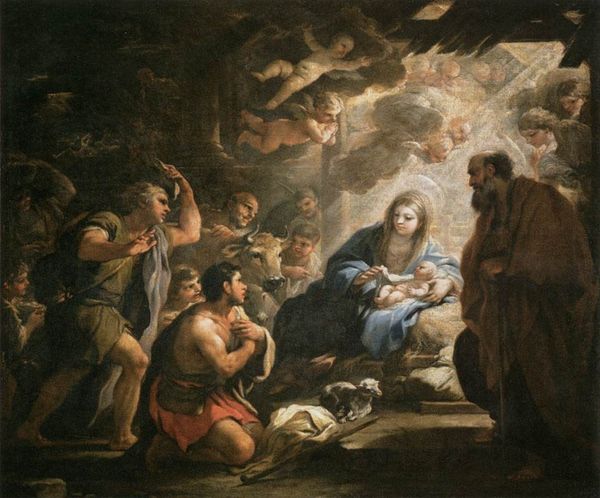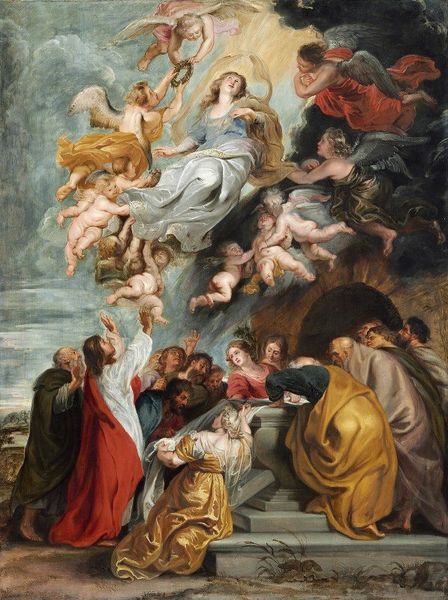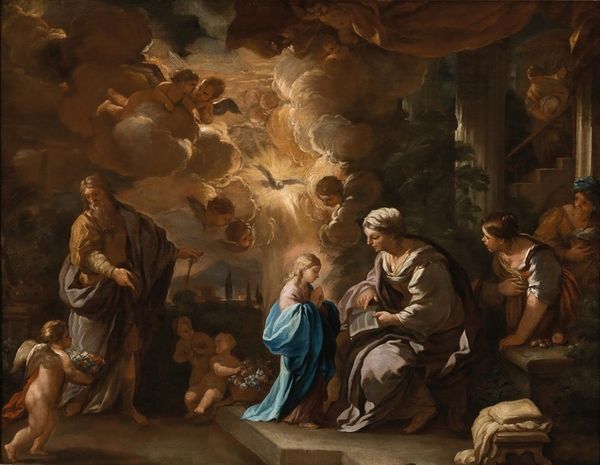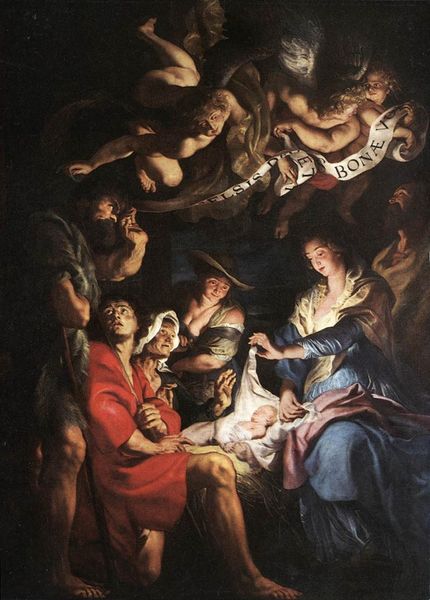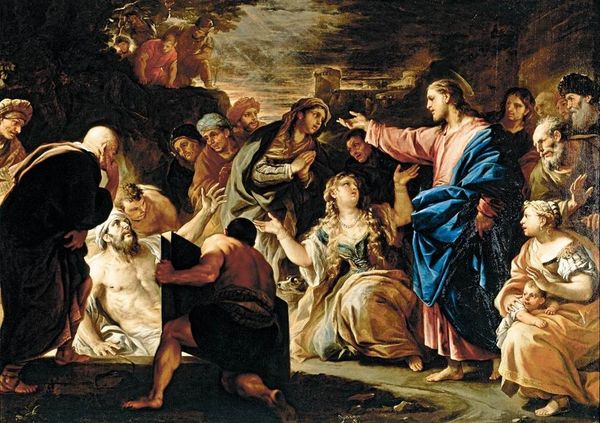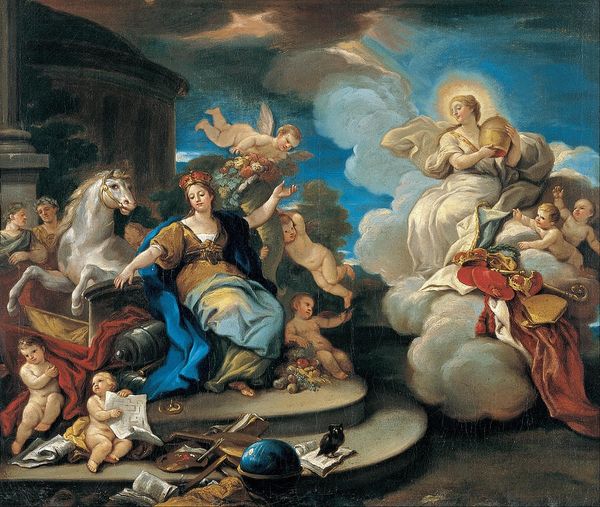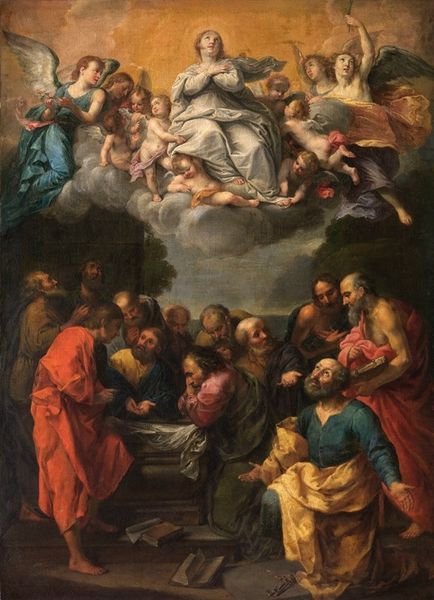
painting, oil-paint
#
portrait
#
allegory
#
baroque
#
painting
#
oil-paint
#
landscape
#
figuration
#
oil painting
#
history-painting
#
italian-renaissance
#
portrait art
Copyright: Public domain
Editor: Here we have Luca Giordano's "Adoration of the Magi," painted in oil. The use of oil paints creates this sense of rich texture, especially in the garments. The whole scene has an otherworldly quality. What can you tell us about this piece? Curator: Well, looking through a materialist lens, let's consider the cost of those pigments. The deep blues and rich golds weren't cheap; their presence speaks to both Giordano’s patron's wealth and their desire to signal prestige. The layering of paint – observe the shadows – hints at a workshop involved in its production. Was this destined for a grand church, or a private collector's cabinet? The distinction is important. Editor: That's a great point about the patronage! Thinking about the layers and shadows makes me wonder, how much time do you think went into creating this, and how does the time investment affect its value as an object? Curator: Time is labor, and labor is value, especially in the 17th century! Look at the scale; this is not a small, devotional painting meant for quick consumption. Each figure meticulously rendered, the fabric folds, even the depiction of animals would involve considerable expense, not only for materials, but also for skilled artist-hours. Its value wasn't just spiritual; it was profoundly material, reflecting power, status and the organization of production. Who were the laborers involved and how were they compensated? Editor: This has made me think about Baroque art as more than just religious scenes; these were also complex productions! Curator: Exactly. The "Adoration" is not simply a religious narrative; it is a testament to the social relations of production and the conspicuous consumption of its era. Considering the painting in this context challenges the common tendency to divorce “high art” from labor and economic systems. Editor: Thank you! It gives you so much to think about.
Comments
No comments
Be the first to comment and join the conversation on the ultimate creative platform.
